#70s male american
Photo

Skeet Ulrich
Facts
January 20, 1970
American actor
Filmography
FP Jones [Riverdale: 2017-2021]
Brice [Escape Room: 2017]
Detective Rex Winters [Law & Order: Los Angeles: 2010-2011]
Paul [Miracles: 2003]
Chris [The Craft: 1996]
Thug [Turtles: 1990]
Appearance
brunette
brown eyes
1.83m
Roleplay
playable: young adult, adult
#Skeet Ulrich#male 70s#male american#70s male american#riverdale#escape room#law & order: los angeles#miracles#the craft#turtles#brunette male young#brunette male adult#70s male brunette#brown eyes male young#brown eyes male adult#70s male brown eyes#young adult male#adult male
5 notes
·
View notes
Text



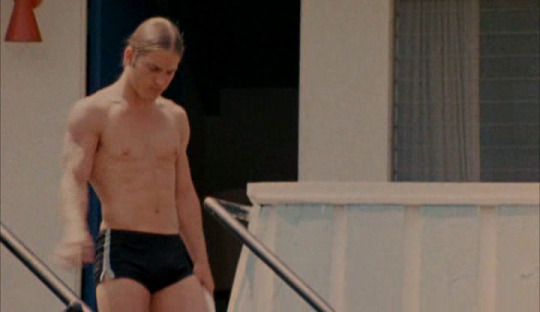






Joe Dallesandro (Trash, 1970)
#joe dallesandro#trash#paul morrissey#united states#american cinema#independent cinema#cult movies#1970s#70s cinema#queer cinema#queer icon#gay#bisexual#man#sex symbol#male body#cinema#guys on film
360 notes
·
View notes
Text
New approach to feminist media discourse: "Scenes such as James Bond seducing Pussy Galore and Thor's abs being touched by Jane Foster all perpetuate toxic matriarchy and the idea that the female gaze is something to be uncritically accepted despite its demeaning effects on men."
#obviously this post is silly#but if you don't get my broader point#I commented on a video addressing female power fantasies and sexist writing disguised as “realism”#I said that i'm sick of how female power fantasies have to be realistic while men can just single handedly take out 70 men in a movie#not have a scratch#and not have it be questioned by the writers or the audience#someone then retorted with "being sexy isn't a female power fantasy. It appeals to the male gaze!'#to which I said#okay#but I still want to be a smoking hot woman#it's more nuanced than that#when guys are bagging chicks and being sauve and built in movies it's not seen as appealing to a female gaze#although in some cases it very much is#like with that thor example#so why does female sexuality have to always be seen through the lens of men even in feminist circles?#the biggest failure of american feminism is its inability to consider more than one female perspective at a time#american feminism#rambles
0 notes
Text

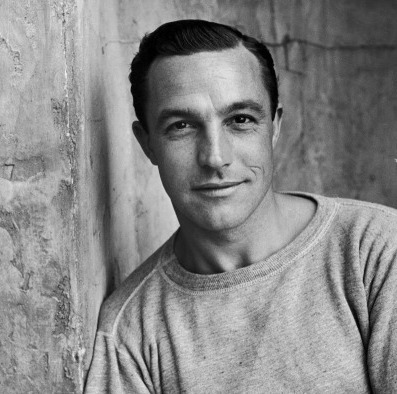
Propaganda
Jeremy Brett (My Fair Lady)—"...he was beautiful. A strange adjective to use in describing a man. I use it not to suggest effeminacy or a kind of male prettiness, but in the same way I would use it to describe a throughbred stallion, Michelangelo's David or Gershwin's Rhapsody in Blue. There was with Jeremy Huggins [Brett's non- stage name] a perfection and sublime symmetry in his features that was beautiful." [quote from "Bending the Willow" by David Stuart Davies]
Gene Kelly (Singin’ in the Rain, An American in Paris, The Pirate)—It’s hard to know where to start with Gene Kelly because he did so, so much, of such a high quality, from the ballet scenes in “An American in Paris” to the classy suave movie star act of “Singin’ in the Rain” to the incredibly camp, sexy “The Pirate”. He just never stopped finding cool ways to do things and he’s just brilliant to watch, especially when he’s dancing, but even when he’s doing drama or being silly! He’s one of those guys who could genuinely do it all and just radiates charisma through the screen, literally an #icon in every sense of the word.
This is round 4 of the bracket. All other polls in this bracket can be found here. Please reblog with further support of your beloved hot sexy vintage man.
[additional propaganda submitted under the cut.]
Jeremy Brett propaganda:
"according to critic Kenneth Tynan a 'too beautiful' Hamlet."
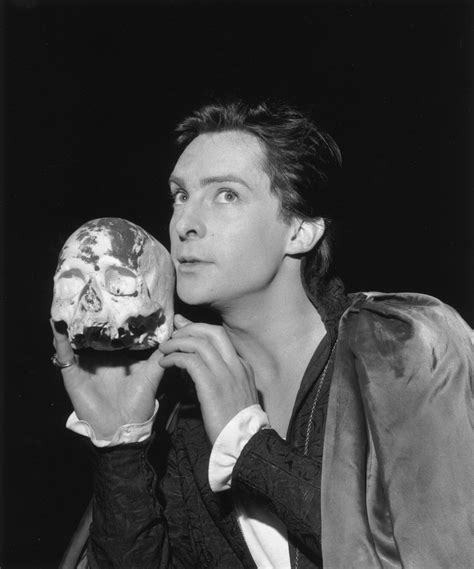
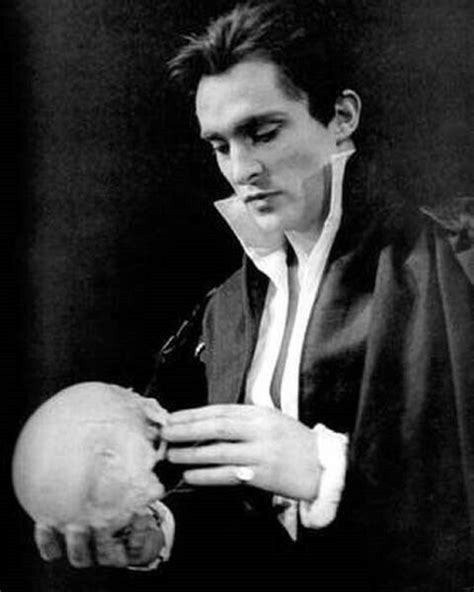
“Please take my humble offering of propaganda for bisexual icon ✨️Jeremy Brett✨️ and his early career!"
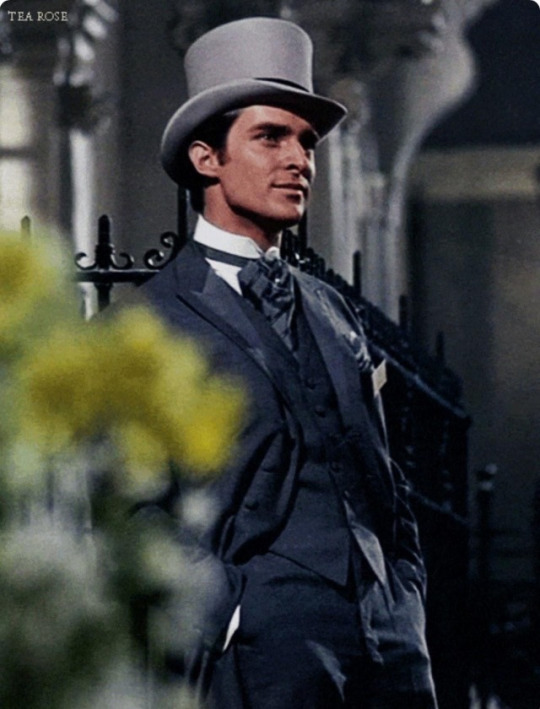
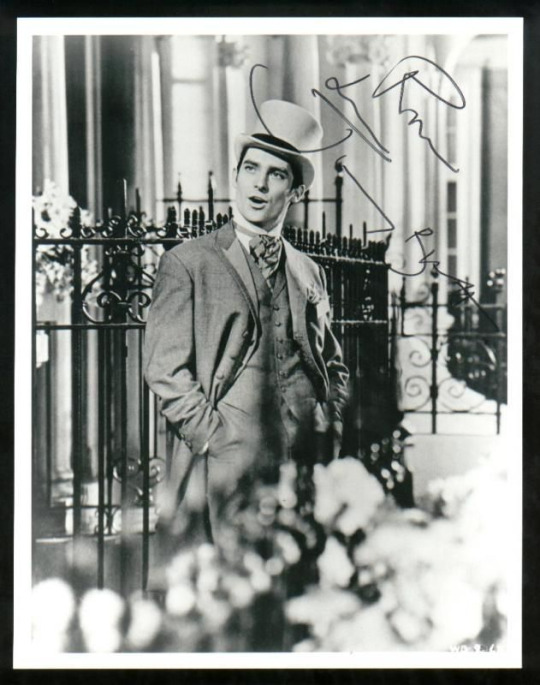
"he’s such a himbo sunshine boy in my fair lady"

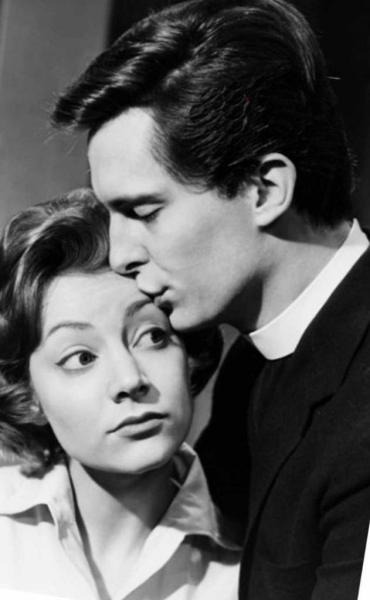

“not technically propaganda because it won’t let me save the images but just found out my bi king jeremy brett played patroclus https://www.jeremy-brett.fr/crbst_183.html and also apparently dorian gray in the 60s and basil hallward in the 70s?? range.”

"...as a dashing D'Artagnan in The Three Musketeers (1966/67) (Duelling is no problem! XD)”

“dropping to sleep - Jeremy is far too handsome to play d'art and also too tall, lol”
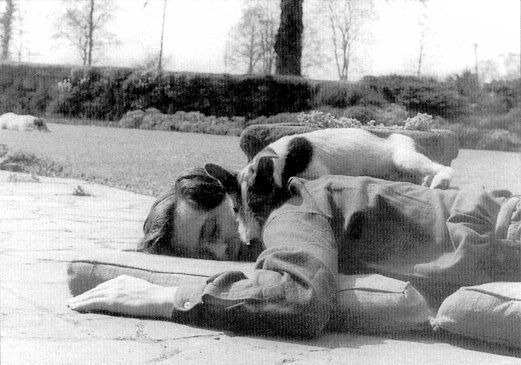
Gene Kelly propaganda:
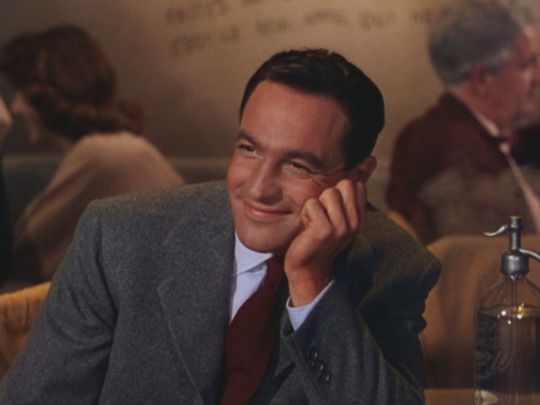

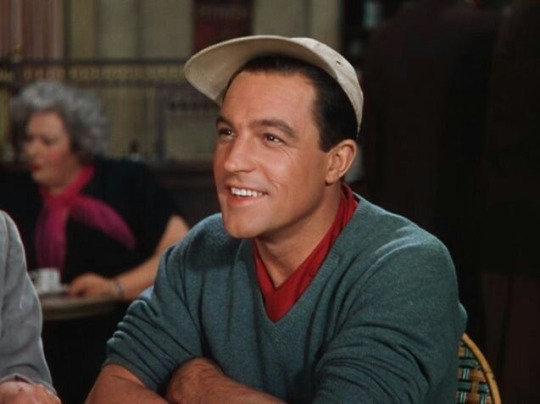
youtube
youtube

youtube
"he was genuinely kind and supportive to judy garland when she was going through a rough time. she was having heavy trauma/addiction responses in 'Summer Stock' which led to her being late all the time and being too scared to come on set, and he actually faked twisting his ankle to distract everyone from her and give her some time off! so yeah, maybe he was a hardass, but when his friend needed him he was 100% there for her, and I think that's worth noting."
#gene kelly#jeremy brett#hotvintagepoll#fuck that old man#round 4#sherlock holmes vs—no i shant say it
3K notes
·
View notes
Text
can't stop thinking about cheerleaders in mcr again
the way they've been in so many of their music videos - I'm not okay, teenagers, blood - and photo shoots and represented things like the American dream and the 'popular' crowd and blind conformity and youth and a certain (male gaze-y) kind of femininity
the way you can turn on kerrang and be very likely to see a band of similar genre also using cheerleaders in their music videos but it being 70% up-skirt shots or love interests whereas mcr have never done that
the way mcr never made the cheerleaders or any female characters in their mv's a 'safe' or 'attractive' kind of weird but instead straight up weird allowing them to dance strangely and wear gas masks and be covered in blood and be rejected by getting poked in the eye or even completely ignored actively tarnishing the cheerleader persona
the way gerard way has now dressed up as one, siding with the cheerleaders after being separate from them for so long
as if the cheerleader is no longer just that but also the girl within the uniform, done being used as a symbol of the American dream and the 'popular' crowd and blind conformity and sexualised femininity unwillingly
the 'and so he gets to die a Saint but she will always be a whore' of it all
#am i making sense??#idk i wrote this all in one go because im crazy about this rn like omg#im sure this has been said in some capacity before as well but i cant shut upppp#btw when i say male gaze-y femininity i dont mean mcr projected that onto them i mean they were aware of this existing and chose the#cheerleaders as a symbol based on that#mcr#my chemical romance#gerard way
809 notes
·
View notes
Text
Happy Valentine's Day! When you think about love and the animal kingdom, are alligators an animal that comes to mind? No? Well, they should be, because they have some of the most interesting courtship behavior of any non-bird. (Bird displays are something else entirely.) I think it's time that you all are introduced to the Big Gay Alligator Sex Study, more properly known as Courtship Behavior of American Alligators (Alligator mississipiensis), written by Kent Vliet. You can get the paper at the link below!
This was a study done over a 3-year period in the 80s with a population of captive American alligators to look at how they interacted. Alligators are incredibly social and have complex behavioral dynamics, and their courtship rituals and routines are pretty dang interesting. In general, crocodilians spend a great deal of time interacting with each other when compared to other reptiles, and the courtship behavior of a few species is well-documented. But in this post, I'm mostly going to talk about the American alligator (with a quick detour into Cuban crocs).
Why Do We Care About Courtship?
So before I dive into talking about this study, let's talk about why we care about courtship (the social behavior that leads to mating) and mating (sexual interaction that could, hypothetically, lead to reproduction). Courtship and mating are extremely important when studying animal behavior- honestly, they're extremely important when studying zoology in general. In some cases, understanding this behavior actually a major conservation concern! For example, the Cuban crocodile is an endangered species. They're largely constricted to two swampy areas of Cuba, both of which also have American crocodiles present. And unfortunately, the female Cuban crocs find the male American crocs really, really sexy. This is a big problem, because with only about 3-4,000 Cuban crocs left in the wild (possibly even fewer), they need to be breeding with their own species to make more Cubanitos.

These. Make more of them.
But what scientists have found is that not only are there hybrid crocs in the wild, the Cuban population of American crocodiles is more closely related to Cuban crocodiles than other populations of American crocodiles, suggesting this has been going on for a very long time.
You can read more about that here if you want, but back to the gay alligators.
Alligator? More Like Alli-GAY-tor, amiright?
(actually that IS wrong it's more like alli-bisexual-tor, but that doesn't sound like alligator)

So how does a study like this happen? Back in the 80s, the American population was Feeling A Way about alligators. Something that you gotta understand when you're doing any kind of conservation is that people protect what they love, and they love what they understand. Alligators are a major conservation success story today- there's millions in the wild- but they were in serious danger of extinction in the 1960s, and it was a combination of legislation, awareness campaigns, and captive breeding at both zoological parks and commercial gator farms that helped bring them back. As a result, they were one of the first species to be de-listed from the ESA!
All of this attention meant that alligator science was flourishing in the late 70s and 80s, and that's where this study comes into being. This post is long enough so I'm not gonna go into all the details and methodology- you can find that in the paper I linked up top!
However, there is one piece of methodology we should talk about, and that's the choice of study population. It's part of what makes this particular study so interesting!. See, in a lot of cases, captive behavior really differs from wild behavior. This can be impacted by captivity conditions- what other animals the study animal has access to, what behaviors the animal has learned in captivity, even down to things like how the animals are fed. For example, some courtship behavior in captive animals can be the result of unnatural habitat conditions or limited social groupings. If you only have access to a couple of conspecifics, you don't have the same choices that you do if you have access to something closer to a wild population. If you've got a breeding group with one male and a handful of females, you can't ask or answer any questions about male/male interactions! Crowding is also an issue- too many animals in a space can be stressful, and lead to atypical sexual behavior.
But that's one of the cool elements of this study: the alligators in question live in a large social group in a lagoon that's basically just natural habitat with a boardwalk going around it. It's about as close to studying a wild population as you can get, with the advantage that it's far more accessible. And what this leads to is that that the researchers were able to see a really wide range of behavior, because all of the alligators had lots of access to lots of different mates. They were able to make choices that you wouldn't see in a smaller group. There's a trade-off that Vliet notes, and that is the population density and captive situation means that results might not quite work out the way they do in the wild- but in the years since, the results of the study have been vindicated with research into wild populations.
So, what are alligators into? Gay sex, group sex, yelling real loud, and lots and lots of... gentle caressing.
that's not a euphemism they spend a lot of time gently rubbing each others' faces
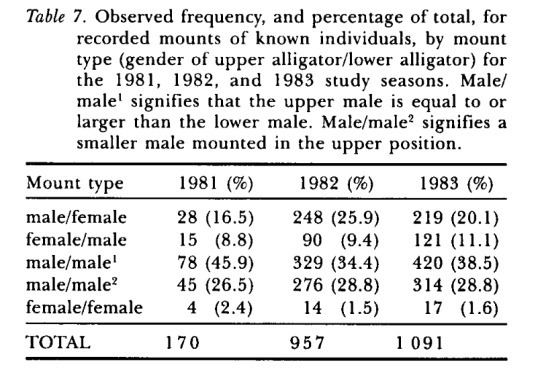
So first things first, it turns out that the vast majority of alligator mounting, which occurs after courtship behaviors like jaw rubbing, bellowing, head rubbing, and swimming together is male/male. Over the three year study period, an average of 68% of all sexual interactions were male/male. However, what they don't really notice is exclusivity, because when it comes to the sex of their sex partner, alligators... well. They aren't all that picky.
Another fascinating aspect of alligator courtship is what's called courtship groups. These are readily observed in captive settings (and in the wild, too, as mentioned in Dragon Songs), and are mixed-sex groups that spontaneously form. As other alligators approach a mounting pair, the original pair will happily split up and switch partners. Usually what happens is that the alligator on top slides off to initiate courtship with a newly-arrived individual. What's really interesting here is that, as the author notes, "males engaged in courtship with a female readily terminate that interaction and initiate interactions with males." Another fun element of alligator courtship is that while in most vertebrates, males approach females, alligator females often approach males. Usually it's the males approaching, but for many crocodilians, courtship initiation is an equal-opportunity affair.
Alligators are also really vocal during courtship! This is pretty unusual for a reptile- usually they're a quiet bunch. But crocodilians are pretty chatty. And during the breeding season, something pretty spectacular happens: infrasonic communication, better known as bellowing. This is sometimes called water dancing, due to the ripple patterns it makes. It's a loud, low-pitched rumble that conveys information about size and location, and is used for territorial displays and as a mating call. During the not-breeding season, a bellow means "stay away!" During the breeding season, it means "HOT ALLIGATOR SINGLES IN YOUR AREA."
Here's some pretty spectacular videos showing you what this looks and sounds like. The vibrations make the water above their backs splash up.
youtube
youtube
Alligators are also extremely tactile during courtship. The study has detailed analysis of touch in specific tactile zones along the head and neck of the alligators. Vliet notes "These sites have increased numbers of swollen pustular scale organs, the function of which is unknown."
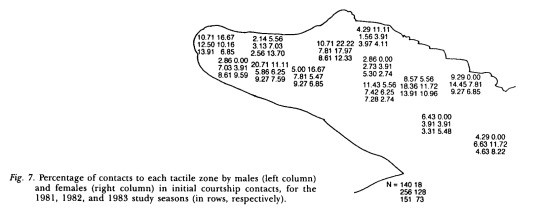
What's kinda funny about this to me is that now, the functions of these organs are known- they're highly innervated tissues that help alligators detect prey in murky water. An alligator's jaws are more sensitive than a human fingertip due to the sheer number of nerve endings! So of course these areas are going to be highly sensitive, and to me it makes perfect sense that they feature so heavily in courtship.
So what can we take away from this 40-year-old study? Quite a bit! First, it's a great reminder that humans aren't special. We see same-sex mating behavior in pretty much every species we look at. We see it in cockroaches, spiders, and butterflies. We see it in sheep. We see it in alligators. We see it in every other species of great ape. Of course we also see it in humans! There's nothing that special about same-sex sexual behavior. It's a part of... pretty much everybody's evolutionary history.
Another thing I think is really important is that while this is an old study, it was absolutely pivotal as a turning point in helping people understand alligators. Remember how I said earlier that we protect what we love, and we love what we understand? This study showed the world that alligators weren't just mindless eating machines. They're socially complex! Understanding alligator sociality and how they choose mates and interact helped us care for them better. It told us more about how to keep them happy in captivity. Alligators are smart, communicative creatures. They don't always get along, but they don't always fight, either. (Don't get me wrong: they will fight each other, and they've actually evolved some pretty specific anti-other-alligator defenses... but they don't always fight, even during the breeding season.) This is interesting to me because in mammals, it's hypothesized that same-sex sexual behavior may have evolved for prosocial reasons; that is, it helps reduce conflicts. Perhaps it does the same for alligators.
In conclusion:

If you want to know more about alligator courtship and mating rituals, I can't recommend Vladimir Dinets's Dragon Songs: Love and Adventure Among Crocodiles, Alligators, and Other Dinosaur Relations highly enough. I know I talk about this book all the time, but it's easily the most accessible writing on crocodilian social behavior. It will change the way you think about and understand these animals.
Another phenomenal book is Alligators: The Illustrated Guide to Their Biology, Behavior, and Conservation by Kent Vliet. (Hm, wonder if he's written anything else...) This is basically the Bible for gator behavior. The photographs are absolutely gorgeous, too.
490 notes
·
View notes
Text
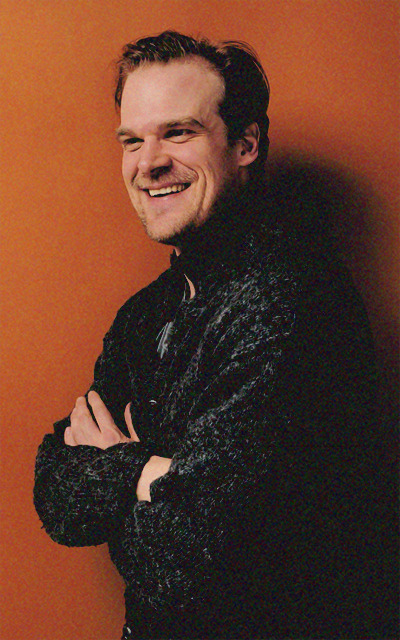

Faceclaim: David Harbour
Age: 47 ans
Année de naissance: 1975
Origines: inconnues
0 notes
Text

Mr.Tom Shelleck, T-Shirts and prints at Redbubble and Teepublic (here with 35% discount for 2 days) :
Teepublic : https://bit.ly/3PyJo0r
Redbubble : https://rdbl.co/3FZYpUx
#70s movies#vintagelook#vintagestyle#80s#moustache#Tom Shelleck#actor#american actor#masculinity#handsome man#male perfection
0 notes
Text
if i see even one more of my russian lit mutuals making pedantic complaints about how katya should be goncharova and not goncharov i'm going to lose my mind. As if the film isn't literally all about cultural dissonance. As if it's not OVERTLY satirical with regards to american stereotypes about Russians, especially back in the 70's when Scorsese was working. Like of course her name is the literalization of Americans misunderstanding and misappropriating other cultures and languages. And that's before we even get into the gender politics of giving Katya a masculine name. There's such an interesting conversation to be had about the strategic withholding of womanhood, even by Katya herself as a self-defense technique in the male-dominated and hypermasculine Naples mafia culture, but all you guys want to do is summarize the Wikipedia page for russian naming conventions to prove you were the runner-up in the 8th grade scholastic spelling bee. Like I understand the impulse but it really makes me worry for the reading comprehension on this website.
#i know we're all tired of bad transliteration but this isn't constance garnett calling Hélène ''Ellen Bezuhoff''. it's a PARODY of that.#goncharov#katya goncharov#unreality
4K notes
·
View notes
Text
Theories of the holy shit what did I just see back there on the street?
Because transmisogyny makes them so impossible to ignore, for at least the last 70 years transfeminized people have served as key material of Anglo-American gender/queer/trans theories, as laundered through anthropology, sexology, and uncited personal witnessing. The anaemic denial of this fact through snappy and surface-level distinctions between ‘queer’ and ‘trans’ and between different transfeminized groups has made it functionally impossible for these theories to seriously account for transf* life, and this failure is highly productive, because it allows for the continued use of both ‘premodern’ ‘third gender’ and ‘postmodern’ transgenderism as lobotomized material for the theories of other people. The last century of gender theoretic development has revolved around slowly refining methods of extracting transfeminized peoples’ insight, forgetting and re-introducing them to their field over and over again to frame them as perpetual novelties, leading to a pernicious form of feminist amnesia that repeats over and over again.
1 . MARGARET MEAD (1949)
The work begins with Margaret Mead, the ‘most famous anthropologist of our century’ (Behar and Gordon 1996), who made her career studying indigenous groups in Samoa and New Guinea, then joined the larger anthropological effort to inform the US Government’s genocidal re-education campaigns against Indigenous American tribes. She later enjoyed a prodigious career as a public intellectual and shifted to more explicitly feminist writing which extensively influenced the movements of the 60s and 70s. Mead argued that essentially all sex-gender roles were culturally determined, and used the specter of the transfeminized homosexual-transvestite both to make that argument and to advocate for gender abolition.
This can be seen most clearly in Mead’s 1949 book Male and Female: a Study of the Sexes in a Changing World. Mead chronologically traces individual gender development through an ethnographic-sexological narrative, beginning with ‘first learnings’ that a child receives primarily through observation. Then the family comes in, and the transvestite comes with it, existing as the primary motive (alongside Freudian sexual attachment) which motivates gendered socialization:
Too great softness, too great passivity, in the male and he will not become a man. The American Plains Indians, valuing courage in battle above all other qualities, watched their little boys with desperate intensity, and drove a fair number of them to give up the struggle and assume women’s dress. (Mead 1949)
Mead argues that “fear that boys will be feminine in behavior may drive many boys into taking refuge in explicit femininity,” but makes a distinction between this identification and what she calls ‘full transvestitism,’ the culturally-specific recognition of that status. This differential leads her to conclude that the physical traits seen as markers of ‘gender inversion’ are culturally specific, and that what is understood as physical sex (then existing on a ‘spectrum’ model) is therefore partially socially determined.
For Mead, gender must be abolished precisely because of the fact that she could even make this argument. As she says,
Only a denial of life itself makes it possible to deny the interdependence of the sexes. Once that interdependence is recognized and traced in minute detail to the infant’s first experience of the contrast between the extra roughness of a shaven cheek and a deeper voice and his mother’s softer skin and higher voice, any programme which claims that the wholeness of one sex can be advanced without considering the other is automatically disallowed.
The desperate need to reproduce these distinctions, to make sex clear and visible and obvious, leads Mead to ultimately argue for a gender abolition that rests on complementary sex-roles. The main benefit of this approach for Mead is the complete eradication of sex-gender ‘confusion’ and its incarnation in transfeminized people, so associated precisely because of their intense usefulness as a tool for undermining sex-gender distinctions. So Mead sees the construction of physical and social gender by using transfeminized people as a lens, but because of her own disgust she can only fix gender by unseeing it again, by displacing gender to ‘real’ physical sex and protecting herself by breaking the tool. This, unsurprisingly, leaves her exactly where she started.
2. BETTY FRIEDAN (1963)
The feminist theorists that came after Mead directly confronted this reversion to ‘complementary sex’ logics, most notably in Betty Friedan’s foundational work The Feminine Mystique. Friedan discusses the ‘paradox’ of Mead’s influence, the strange combination of her exposure of ‘the infinite variety of sexual patterns and the enormous plasticity of human nature’ and her ‘glorification of women in the female role – as defined by their sexual biological function.’ In the middle, Friedan cites a page-long quote describing a point of ambivalent warning in Mead’s writing:
The difference between the two sexes is one of the important conditions upon which we have built the many varieties of human culture that give human beings dignity and stature… Sometimes one quality has been assigned to one sex, sometimes to the other. Now it is boys who are thought of as infinitely vulnerable and in need of special cherishing care, now it is girls… Some people think of women as too weak to work out of doors, others regard women as the appropriate bearers of heavy burdens “because their heads are stronger than men’s” … Some religions, including our European traditional religions, have assigned women an inferior role in the religious hierarchy, others have built their whole symbolic relationship with the supernatural world upon male imitations of the biological functions of women. (emph added by me)
...Are we dealing with a must that we dare not flout because it is rooted so deep in our biological mammalian nature that to flout it means individual and social disease? Or with a must that, although not so deeply rooted, still is so very socially convenient and so well tried that it would be uneconomical to flout it…
...We must also ask: What are the potentialities of sex differences? … If little boys have to meet and assimilate the early shock of knowing that they can never create a baby with the sureness and incontrovertibility that is a woman’s birthright, how does this make them more creatively ambitious, as well as more dependent upon achievement?
Friedan attributes this ultimate focus on sexual difference to Mead’s Freudianism: she argues that Mead’s need to approach culture and personality through sexual difference, combined with her anthropological understanding that ‘there are no true-for-every-culture sexual differences except those involved in the act of procreation’ (Friedan and Quindlen 1963), combines to cause her to inflate the cultural importance of the reproductive role of women. Friedan intensely rebukes this reification of reproduction as another component of the ‘feminine mystique’ (very close to the modern ‘divine feminine’), advocating for programs which enable women to reject the mystique and housewife status and to seek education and employment, to combat the problem ‘which had no name’ but takes shape through spikes in female ‘sex-hunger’ and ‘overt manifestations’ of passive male homosexuality, both understood as ‘children acting out the sexual phantasies of their housewife-mothers.’ In a paradoxical return to Freudianism, Friedan characterizes husbands unwilling to let their wives work as being seduced ‘by the infantile phantasy of having an ever-present mother’ (the Freudian homosexuality-signifier), associating antifeminism with passive homosexuality with femininity which the aspiring feminist has escaped, learning to compete “not as a woman, but as a human being.”
3. THE MULTIPLICATION OF TRANSFEMINIZED SUBJECTS
As we can see, transfeminized subjects are frequently used as signs of system collapse, hypervisible enough to be easy examples and potent enough to rhetorically corrode existing sex-gender systems in preparation for the author’s own vision. Once a piece is published, these examples are usually then forgotten, assumed as scaffolding for the real theory; but the rhetorical strawmen of these transfeminized subjects still remain, trapped implicitly in the text, and they bleed into one another with every new addition to the corpus, every call to action invoking a new transfeminized archetype.
So far we have seen Mead’s anthropological-orientalist framing of ‘transvestitism’ among the anthropological Other and Friedan’s psychological framing of ‘passive homosexuality’ in the United States. The increasing visibility of adult ‘transsexuality,’ somewhat disjoint from the developmental sexology Gill-Peterson (2017) discusses because of its visibility in high-profile cases like Christine Jorgensen, was likewise framed for theory. Harold Garfinkel’s (1967) book Studies in Ethnomethodology, which described methods for observing ‘the objective reality of social facts as an ongoing accomplishment,’ used an intersex woman named Agnes as an avenue to expose how everyday social facts are constructed. Agnes was an ideal exemplar because her insistence on getting HRT and being seen as a woman was considered psychologically normal: “Such insistence was not accompanied by clinically interesting ego defects. These persons contrast in many interesting ways with transvestites, trans-sexualists, and homosexuals.” Of course, Garfinkel was later notified that Agnes did not have an intersex condition, and he then noted that ‘this news turned the article into a feature of the same circumstances it reported, i.e. into a situated report.’
Anyways, now it’s time for yet another transfeminized subject: the ‘transsexually constructed lesbian feminist.’
4. JANICE RAYMOND (1979)
As with her predecessors, Raymond sees analytical power in her particular transfeminized group, arguing that “transsexualism goes to the question of what gender is, how to challenge it, and what reinforces gender stereotypes in a role-defined society.” But she also has some concerns for ‘transsexual women,’ initially assumed heterosexual, none of which are particularly novel or interesting. Now that she’s writing in an environment dominated by Friedan’s mandate towards shedding femininity, feminist amnesia makes it novel to regurgitate Margaret Mead’s responses: that “male transsexualism may well be a graphic expression of the destruction that sex-role molding has wrought on men,” and that “men recognize the power that women have by virtue of female biology and the fact that this power, symbolized in giving birth, is not only procreative but multidimensionally creative” (Raymond 1979).
Her analysis of (new archetype) ‘transsexually-constructed lesbian feminism’ is much more interesting. While Raymond can understand heterosexual transsexual women as ‘reinforcing gender stereotyping’ by pulling primarily from medical archives already hegemonized by gatekeeping and passing requirements, the transsexual women in the lesbian-feminist movement achieved a certain degree of personal contact and visibility that undermined ‘hegemonizing’ logics. So Raymond uses three main arguments: an essentialist appeal to fundamental ‘maleness,’ a red-scare-esque appeal to transsexual lesbian feminists as ‘court eunuchs’ bent on monitoring and controlling feminist spaces, and finally, an argument that transsexual lesbian feminists are fundamentally epistemically corrosive to lesbian feminist spaces:
Whereas the lesbian-feminist crosses the boundary of her patriarchally imposed sex role, the transsexually constructed lesbian-feminist is a boundary violator. This violation is also profoundly mythic, for as Norman O. Brown writes of Dionysus, he as the ‘‘mad god who breaks down boundaries.’’
Contrary to contemporary transmisogynistic discourse which frames trans lesbians as personal threats to women in lesbian-feminist spaces, this violation takes its form not in any particular act but in the act of passing, the deconstructive question this existence seemingly automatically places on lesbian-feminist spaces:
One of the most constraining questions that transsexuals, and, in particular, transsexually constructed lesbian-feminists, pose is the question of self-definition—who is a woman, who is a lesbian-feminist? But, of course, they pose the question on their terms, and we are faced with answering it.
Raymond notes with some frustration that this transsexual question has been discussed ‘out of proportion to their actual numbers,’ using up valuable feminist energy, and frames this as a symptom and crime of transsexual lesbianism itself. The trans question is transsexual women; like the theorists before her, she sees transfeminized people as a gaping hole in the gendered world, but now they’re inside her house, feeding “off woman’s true energy source, i.e., her woman-identified self,” and inherently stand to break “the boundaries of what constitutes femaleness,” to dissolve lesbian-feminism itself.
I want to stress two main points in all of this. First, Raymond understands studying transsexualism as a crucial tool for answering ‘the question of what gender is’ and ‘how to challenge it.’ Second, Raymond’s anxiety about transsexual lesbian-feminists moves away from specific actions and towards the ‘penetration’ inherent in their existence in these spaces at all, the understanding that transsexual women are inherently corrosive to lesbian-feminist movements. These two points are clearly linked. Raymond understands transsexuality as a form of epistemic gender acid, something that can be useful at arm’s length but is deadly up close. Of course, the transfeminized people she discusses were not necessarily invested in asking the Trans Question themselves; trans women attended lesbian-feminist events like Michfest before and after their trans exclusion policies, and regardless of ‘passing’ many people enjoyed a form of don’t ask don’t tell (Tagonist 1997). But within these spaces, the Trans* Question long predated the actual existence of transfeminized people – so once they arrived, the Question and person were fundamentally linked. Trans theorists have negotiated this association extensively, but that’s not the topic of this essay, so I’ll leave you with some sources (Stryker 1994; Stone 1992) and move to Butler.
5. JUDITH BUTLER (1990)
This work has been done already by Vivian Namaste (2020), who argues that “contemporary discussions of Anglo-American feminist theory, exemplified in Butler’s work, begin with the Transgender Question as a way to narrow our focus to the constitution, reproduction, and resignification of gender.” This singular focus on the ‘Transgender Question’ has made it functionally impossible for Anglo-American feminist theory to consider the outsized role of work, particularly sex work, in motivating the discrimination and violence against transfeminized people of color: “framing violence against transsexual prostitutes as ‘gender violence’ is a radical recuperation of these events and their causal nature-a violence at the level of epistemology itself.”
Namaste attributes this focus on featureless ‘gender violence’ to a crippling lack of empiricism, a lack of researcher-subject equity, and an exclusion of subject knowledges. She provides an effective power-based solution to this epistemic violence – that feminist theorists should talk with the subjects of their theory and give them some measure of power in the transaction – a sort of endpoint analysis which means she doesn’t need to consider too much of the internals of the system she’s challenging. That’s a good idea for her work, but with the benefit of history we can move differently. The next section synthesizes Butler, Friedan, Mead, and Raymond together to provide a functionalist analysis of the feminist theoretic use of transfeminized people. What are the benefits of using transfeminized people as an epistemic tool in feminist theory? What are the dangers of using this epistemic tool, and how does feminist theory manage those dangers?
6. PATTERNS OF EXTRACTION AND DEFENSE
Looking past Butler and further into the past reveals that transfeminized people have been crucial not just to the feminist theory of the past 20 years, but have served as exemplars as far back as the 1940s. The ‘Trans* Question,’ which frames transfeminized people as the most visible signifier and most horrifying symptom of social gender, has been cyclically used in a form of feminist cultural amnesia:
A transfeminized group serves as a hypervisible example to 'deconstruct' social gender
Transfeminized deconstruction bloats beyond itself, undermining 'sex traits' or 'femaleness' or some other foundational category of feminist analysis.
Reconstruction of gender as 'biological sex,' alliance between feminist theorists and men of all stripes by arguing that post-gender eradication of transfeminized people will (a) allow men to be feminine without becoming women or (b) destroy femininity entirely.
New-generation feminist theorists realize their predecessors have reinvented social gender. Return to (1).
As Margaret Mead’s work shows, the use of transfeminized groups to deconstruct both physical and social gender has been observed regardless of transmedicalization. This helical pattern has a few general properties:
Each cycle introduces a distinct transfeminized group, positioning it against prior groups as uniquely suitable for analysis, but simultaneously blurs the new group into the existing melange.
This "Trans* Queston" is almost entirely devoid of group-specific context and rooted in transmisogyny, which positions them as horrifying and visible symptoms of social gender.
Each "Trans* Question" initially exposes social gender, but constantly threatens to dissolve other categories or even the theorist's own writing as socially constructed, against the theorist's will.
Each new cycle demonstrates near-complete historical amnesia as to the relevance of transfeminized people in the prior theoretical move.
So the “Trans* Question” allows for the basic feminist move, asserting that gender is socially constructed, but if improperly controlled it stands to dissolve virtually any definition feminist theorists try to build. To be clear, I do not believe in the total deconstruction of categories – you need definitions, even ones you acknowledge as imprecise, to say anything at all. But transfeminized people probably have pretty solid ideas about gender, having to, you know, live with it. The alienated ‘Trans Question*’ has none of this insight, appearing instead as a gaping epistemic hole in the world, and so feminist theorists are forced to come up with complicated quarantining measures to keep the Question from spilling over.
What jeopardizes feminist theory’s use of the Question? One answer (among many) comes by looking at Mead, who concluded that physical characteristics seen as ‘sex traits’ were socially constructed by looking at the culture-specific construction of what she called ‘full transvestitism.’ In this case, the Question undermined sex when the social position of transfeminized subjects were seen as simultaneously normative and anti-normative, existing in some normative ‘social’ role while being understood as distinct from non-transfeminized subjects via another ‘natural’ axis. The fact that these splits were made differently across different transfeminized groups undermined the distinction between social and ‘natural/biological’ aspects of gender, and because the alienated Question provides no means of making anything solid out of any of this, Mead retreated to the womb.
So understanding that the Question allows for the deconstruction of gender, and that it overgrows when multiple (studied as) semi-normative transfeminized groups are cross-compared with one another, we can consider aspects of contemporary feministqueertrans theory that enforce the epistemic isolation and normativization/antinormativization of transfeminized groups. The knots this ties in feminist theories seem relevant both to the ‘why does trans theory exist’ question posed by Chu & Drager (2019) and to the challenges and limitations of applying queer/trans theory to groups outside the anglosphere (Chiang 2021, Savci 2021). I’ll discuss that more in another essay.
SOURCES
Behar, Ruth, and Deborah A. Gordon. 1996. Women Writing Culture. First Edition. Berkeley: University of California Press.
Chiang, Howard. 2021. Transtopia in the Sinophone Pacific. Columbia University Press.
Chu, Andrea Long, and Emmett Harsin Drager. 2019. “After Trans Studies.” TSQ: Transgender Studies Quarterly 6 (1): 103–16. https://doi.org/10.1215/23289252-7253524.
Friedan, Betty, and Anna Quindlen. 1963. The Feminine Mystique. Reprint edition. New York: W. W. Norton & Company.
Garfinkel, Harold. 1967. Studies in Ethnomethodology. 1st edition. Cambridge Oxford Malden,MA: Polity.
Gill-Peterson, Jules. 2017. “Implanting Plasticity into Sex and Trans/Gender.” Angelaki 22 (2): 47–60. https://doi.org/10.1080/0969725X.2017.1322818.
Mead, Margaret. 1949. Male and Female: A Study of the Sexes in a Changing World. First Edition. William Morrow.
Namaste, Viviane. 2020. “Undoing Theory: The ‘Transgender Question’ and the Epistemic Violence of Anglo-American Feminist Theory.” In Feminist Theory Reader, edited by Carole McCann, Seung-kyung Kim, and Emek Ergun, 5th edition. New York, NY London: Routledge.
Raymond, Janice G. 1979. The Transsexual Empire: The Making of the She-Male. New York: Teachers College Press.
Savci, Evren. 2021. Queer in Translation: Sexual Politics Under Neoliberal Islam. Durham (N.C.): Duke University Press Books.
Stone, Sandy. 1992. “The Empire Strikes Back: A Posttranssexual Manifesto.” Camera Obscura: Feminism, Culture, and Media Studies 10 (2 (29)): 150–76. https://doi.org/10.1215/02705346-10-2_29-150.
Stryker, Susan. 1994. “My Words to Victor Frankenstein Above the Village of Chamounix: Performing Transgender Rage.” GLQ: A Journal of Lesbian and Gay Studies 1 (3): 237–54. https://doi.org/10.1215/10642684-1-3-237.
Tagonist, Anne. 1997. “Sister Subverter Diary August ’97.” Unapologetic: The Journal of Irresponsible Gender.
192 notes
·
View notes
Photo

Ebon Moss-Bachrach
Facts
March 19, 1977
American actor
Filmography
Richie [The Bear: 2022]
John [The Dropout: 2022]
Trey [Interrogation: 2020]
David/ Mirco [Marvel's The Punisher: 2017]
Desi [Girls: 2014-2017]
Ethan [Upper East Side Love: 2007]
Steve [Winter Solstice: 2004]
Billy [Murder in a Small Town: 1999]
Appearance
brunette/ dark blonde
blue eyes
1.85m
Roleplay
playable: young adult, adult
#Ebon Moss-Bachrach#male 70s#male american#70s male american#the bear#the dropout#interrogation#marvel's the punisher#girls#upper east side love#winter solstice#murder in a small town#brunette male young#brunette male adult#70s male brunette#dark blonde male young#dark blonde male adult#70s male dark blonde#blue eyes male young#blue eyes male adult#70s male blue eyes#young adult male#adult male
4 notes
·
View notes
Note
I'm at the gym rn and thought abt how the 141 and König are literally the 5 types of male gymgoers
Ghost is the one fighting demons and doesn't make a single sound their entire workout
Price is the slightly older guy who is really good at giving advice
Kyle is the super nice gymbro who cleans every piece of equipment after he's done with it
Johnny is the guy who doesn't really look like the strongest person ever until he benches like 70 kg 20 times in one sitting
And König is the one that looks like an Olympian god but is incredibly sweet and has the personality of a lost puppy
YOU ARE SO RIGHT
Ghost fr is the type to work out to get rid of his stress, silent and brooding as always.
Price knows a bit too much about supplements that’ll help you create muscle.
WE LOVE KYLE IN THIS HOUSE!!! As he should clean up after himself!!!!
Johnny 100% has a semi-sleeper build. He also encourages strangers when they have to deadlifts or any lifting of any kind, slapping their shoulders and yelling encouraging words. (for my fellow americans, 70 kg is about 154 lb.)
König is 100% jacked and intimidated other gym goers, but tbh he just wants everyone to have their turn and have fun during their workouts!!!
246 notes
·
View notes
Text
Movie Night!
Masterlist
David
Nosfratu
"Hard to understand movies so that he can explain then to you to seem smart
male manipulater movies
bonds with dwayne over mystery/crime becuase it makes him feel like hannible lecter when solving them red flag
genuinly things hannible lecter is cool
likes quention tarrentino, american psycho, gaslight, and vertigo
film bro
Dwayne
Lord of the Rings/The Hobbit
romantic
mystery/crime: Sherlock Holmes
would put on pride and predijuce to impress you
likes historical/historical fiction too
went to go see opennheimer when it came out, then barbie becuase you asked him too
cleopatra is is favorite (he has a massive crush on elizebeth taylor and will go feral if you dress as her in any way)
likes some horror, but speficically 70s classic horror
Paul
dazed and confused (it reminds him of himself)
fast times at ridgmont high
spoof movies like vampires suck and scary movie are his favorite
adam sandler is the funniest man to him
no thinking type of movies are his favorite
slasher horror
scream franchise is his favorie
like horror due to the gore, but if makes you squemish and hold on to him that's a massive bonus in his book
sometimes he goes overboard and will wathch human centiped, green inferno, and house of mortal sin
Marko
Secretly like romance
sneaks off to watch rom coms becuase he's afraid of the boys making fun of him
dwayne caught him and joined in (they cried together)
disney films (But the good ones)
dinosaur, the black cauldron, homeward bound makes him cry every time
sassy is his favorite
watched spoof and horror movies with paul
Together
every once and a while max lets them pick movies out of the video stoer
they all make their way over to a spare room (max does not allow them to go into the "good living room")
they sit and watch movies while wresteling or cracking jokes with each other
if you join them, be prepared to get your ass smacked, many times
it's annoying if it's a horror movie they think it's funny
you clean up after them
the carpet is stained and you can see why maz doesn't let them into the rest of the house
if you manage to fall asleep they will turn down the movie and just lay on the floor with you
thankfully the room has one couch with a matress on the floor and a bunch of pillows
the only table is the one the t.v. sits on they rarley put their drink on the table, even if there's room
#the lost boys#david tlb#dwayne tlb#marko tlb#paul tlb#david the lost boys#dwayne the lost boys#paul the lost boys#marko the lost boys#david x reader#paul x reader#marko x reader#dwayne x reader#the lost boys 1987#david the lost boys 1987#paul the lost boys 1987#marko the lost boys 1987#dwayne the lost boys 1987#dwayne tlb x reader#marko tlb x reader#david tlb x reader#paul tlb x reader
115 notes
·
View notes
Text
But what exactly is it about women's equality that even its slightest shadow threatens to erase male identity? What is it about the way we frame manhood that, even today, it still depends so on "feminine" dependence for its survival? A little-noted finding by the Yankelovich Monitor survey, a large nationwide poll that has tracked social attitudes for the last two decades, takes us a good way toward a possible answer. For twenty years, the Monitor's pollsters have asked its subjects to define masculinity. And for twenty years, the leading definition, ahead by a huge margin, has never changed. It isn't being a leader, athlete, lothario, decision maker, or even just being "born male." It is simply this: being a "good provider for his family."
If establishing masculinity depends most of all on succeeding as the prime breadwinner, then it is hard to imagine a force more directly threatening to fragile American manhood than the feminist drive for economic equality. And if supporting a family epitomizes what it means to be a man, then it is little wonder that the backlash erupted when it did—against the backdrop of the '80s economy. In this period, the "traditional" man's real wages shrank dramatically (a 22 percent free-fall in households where white men were the sole breadwinners), and the traditional male breadwinner himself became an endangered species (representing less than 8 percent of all households). That the ruling definition of masculinity remains so economically based helps to explain, too, why the backlash has been voiced most bitterly by two groups of men: blue-collar workers, devastated by the shift to a service economy, and younger baby boomers, denied the comparative riches their fathers and elder brothers enjoyed. The '80s was the decade in which plant closings put blue-collar men out of work by the millions, and only 60 percent found new jobs—about half at lower pay. It was a time when, of all men losing earning power, younger baby-boom men were losing the most. The average man under thirty was earning 25 to 30 percent less than his counterpart in the early '70s. Worst off was the average young man with only a high-school education: he was making only $18,000, half the earnings of his counterpart a decade earlier. Inevitably, these losses in earning power would breed other losses. As pollster Louis Harris observed, economic polarization spawned the most dramatic attitudinal change recorded in the last decade and a half: a spectacular doubling in the proportion of Americans who describe themselves as feeling "powerless."
When analysts at Yankelovich reviewed the Monitor survey's annual attitudinal data in 1986, they had to create a new category to describe a large segment of the population that had suddenly emerged, espousing a distinct set of values. This segment, now representing a remarkable one-fifth of the study's national sample, was dominated by young men, median age thirty-three, disproportionately single, who were slipping down the income ladder—and furious about it. They were the younger, poorer brothers of the baby boom, the ones who weren't so celebrated in '80s media and advertising tributes to that generation. The Yankelovich report assigned the angry young men the euphemistic label of "the Contenders."
The men who belonged to this group had one other distinguishing trait: they feared and reviled feminism. "It's these downscale men, the ones who can't earn as much as their fathers, who we find are the most threatened by the women's movement." Susan Hayward, senior vice president at Yankelovich, observes. "They represent 20 percent of the population that cannot handle the changes in women's roles. They were not well employed, they were the first ones laid off, they had no savings and not very much in the way of prospects for the future." Other surveys would reinforce this observation. By the late '80s, the American Male Opinion Index found that the largest of its seven demographic groups was now the "Change Resisters," a 24 percent segment of the population that was disproportionately underemployed, "resentful," convinced that they were "being left behind" by a changing society, and most hostile to feminism.
To single out these men alone for blame, however, would be unfair. The backlash's public agenda has been framed and promoted by men of far more affluence and influence than the Contenders, men at the helm in the media, business, and politics. Poorer or less-educated men have not so much been the creators of the antifeminist thesis as its receptors. Most vulnerable to its message, they have picked up and played back the backlash at distortingly high volume. The Contenders have dominated the ranks of the militant wing of the '80s antiabortion movement, the list of plaintiffs filing reverse-discrimination and "men's rights" lawsuits, the steadily mounting police rolls of rapists and sexual assailants.
-Susan Faludi, Backlash: the Undeclared War Against American Women
54 notes
·
View notes
Text


For decades the women of abstract art were pushed aside: critics and propagandists like Clement Greenberg focused on the male “geniuses”, e.g. Jackson Pollock or Willem de Kooning, and ignored the women artists contributing to abstraction. This marginalization continued in the historicization of abstract art and abstract expressionism in particular: in important exhibitions, e.g. at the MoMA’s 1970 show „New York Painting and Sculpture 1940-1970“, few or no women were included and also art history treated them stepmotherly. The latter actually went well beyond the American and European realms and concerned Asia or Latin America as well.
But thanks to feminist art historians women artists of abstraction have been wrested from oblivion and, although often after their passing, finally their due attention and praise. This concern also drove the Whitechapel Gallery, the Fondation Vincent Van Gogh and the Kunsthalle Bielefeld to collaborate on the survey exhibition „Action, Gesture, Paint - Women artists and abstraction worldwide 1940-70“: besides well-known artists like Helen Frankenthaler or Lee Krasner the exhibition also features lesser-known protagonists like Aiko Miyawaki, Tomie Ohtake or Franciszka Themerson. The final stage of the traveling exhibition at Kunsthalle Bielefeld until March 3 again demonstrates the general diversity of abstraction as an artistic idiom but also the quality of the gathered artists which in no way correlates to their relative obscurity. Instead, the exhibition leaves the impression that the male-dominated art world deliberately excluded the contribution of women to abstract art.
In order to enter deeper into the history of women and abstraction the present catalogue accompanying the exhibition is highly recommended: it collects 7 essays shedding light on a variety of topics, e.g. the rise of gestural abstraction as a global development with men and women acting as innovators side by side, as Laura Smith concludes, or the particular situation women artists faced in postwar Germany as elaborated by Laura Rehme. Thus, both catalogue and exhibition are an inspiring point of departure for exploring the female side of postwar abstract art.
#women artists#abstract art#exhibition catalogue#art book#art history#abstract expressionism#modern art
31 notes
·
View notes
Text
Late Birthday Present
Fandom: Elvis Presley, American Musician, RPF, Elvis Movie
Pairing: Elvis Presley x Female Reader [can be Elvis and Priscilla if you want]
Characters: Elvis Presley, Female Reader, Original Male Character
Word Count: 3197 // Rating: Explicit
Summary: All she wanted was to make Elvis’ birthday special
Tags/ Warnings: Semi Public Sex, Kissing, Oral Sex, Vaginal Sex, Arguing, Angst, Jealousy, Double Standards, Doggy Style, Hollywood, Elvis’ Birthday, Birthdays, Clubbing, Drinking, Alcohol, Jealous E, Set in the 70s, 70s Elvis, Established Relationship, Marriage, Love, Fluff, Possessiveness, Slight Breeding Kink, Slight Dom Elvis, Smut,
Notes: It’s the main man’s big day so how about some smut?

The room was spinning as I placed my forehead against the cool tile of the bathroom stall feeling the effect of the alcohol hit me all at once. I hadn’t realised just how tipsy I was until I was alone in the bathroom with the harsh fluorescents baring down on me. It was my husband Elvis’ birthday and though he didn’t like a fuss I had wanted to make it special and decided to treat him and our friends to a fancy dinner at one of our favourite spots in West Hollywood. The only downside to this was that once we were out we started drinking and soon enough someone suggested we head to a bar and then another and now I was sitting with my head between my legs in a club toilet. After I finished peeing I freshened up and headed out into the bathroom to assess the damage. Surprisingly, I looked okay though the harsh lights made me look a little washed out. I washed my hands and topped up my lipstick before I headed back out into the dark club.
It was busy but not so much that I couldn’t make my way through the crowd. Elvis and his boys were tucked away in a booth at the back of the club with ongoing table service so I spied my chance to get myself another drink. If I switched to water now in front of them I’d surely be deemed as a bad sport so I pitched up at the bar and flagged down the bartender for a bottle of water. As I stood there I felt a presence beside me and I looked to find a man watching me with a kind smile. I smiled back politely before I took my bottle of water and told the bartender to stick it on our ongoing tab. As I took a sip of my drink I glanced to my side again and found him still looking at me.
‘Are you okay?’ I asked as I put my bottle on the counter.
‘Yeah,’ he said turning to me properly, ‘I just feel like I know you from somewhere.’
‘Oh probably just one of those faces,’ I said.
‘Yeah probably,’ he said eyeing me a little closer, ‘are you an actress?’
‘No,’ I said, stopping myself from following it up with ‘no but my husband is’ in an attempt to avoid having the same old conversation that gushed about my husband. It’s not that I minded his fans. It was just that having to answer the same questions over and over again got a little tiring. As he watched me I noticed recognition flicker in his eyes which was confirmed as he said, ‘wait you’re Y/N Presley, right?’
‘That’s me,’ I said with a forced smile.
‘See I always remember a pretty face,’ he chuckled.
‘Just not a name right?’ I ribbed making him laugh.
‘Hey, I got there in the end,’ he smiled which faded a little as he said, ‘so what brings Y/N Presley out on a night like tonight?’
‘Oh, we’re sorta celebrating,’ I said watching as he looked at me to continue, ‘it’s my husband's birthday.’
‘Really?’ he asked, ‘wait, is he here?’
‘Yeah,’ I said turning to point towards the back of the club.
‘No shit that’s awesome,’ he said.
‘Are you a fan?’ I said. He shrugged.
‘I like his music,’ he said though he stopped hesitantly.
‘But?’ I asked.
‘His movies aren’t really my scene,’ he said. I nodded. I couldn’t blame him. If I was being honest Elvis’ movies weren’t really his scene either. He longed to get himself into something more serious, something he could really get his teeth into, but the studios didn’t want that. They knew he would draw a crowd no matter what the content of the film so they relied on old formats and cheap production to capitalise as much as possible. I knew it hurt Elvis that his acting career hadn’t turned out the way he wanted which was why I had been so happy to see him back doing what he did best, performing. There was no way anyone could interfere with his performance when he was on stage. He wasn’t confined to what he was given. He was in total control.
The guy took my silence for offence and instantly started backtracking, ‘I mean not that there’s anything wrong with them per se. I mean I’m not some Hollywood director or anything-’
‘Don’t worry about it,’ I said waving him off. I changed the subject to move past the feeling of awkwardness, ‘so if you’re not a Hollywood director what do you do?’
‘Actually, I’m a baseball player,’ he said.
‘Oh, that’s cool,’ I said instantly feeling bad for not recognising him, ‘sorry I don’t follow baseball much.’
‘I figured,’ he chuckled, ‘don’t worry I expect being married to a living legend keeps you a little busy.’
‘Just a tad,’ I giggled.
As he went to speak I noticed people around us moving and turned to find Elvis striding through the crowd until he got to us with a few lingering glances following him. His gaze flicked between me and the guy and his jaw clenched. The man didn’t seem to notice as he broke into an expression of wide-eyed wonder but I did and I could tell he was pissed.
‘Hey man. I’m Joe,’ he said sticking his hand out in front of Elvis who shook it quickly, ‘wow, um, nice to meet you.’
‘Yeah,’ Elvis said somewhat dismissively, his normal suave charm absent.
‘Baby-’ I started.
‘Where’ve you been? I’ve been sitting on my own for nearly twenty minutes’ he said now ignoring Joe and looking at me solely.
‘I went to the bathroom and then I was just getting a drink,’ I said gesturing to the bottle of water on the bar.
‘Sorry man that was probably my fault. I kept her talking,’ the guy said.
‘Must’ve been a damn interesting conversation,’ Elvis said curtly though his volume was a little louder than before causing more heads to turn in our direction. I stepped towards him and placed my hands on his chest.
‘Baby people are lookin’,’ I said quietly noting that several of the boys were now behind him trying to see what the problem was or if they needed to intervene.
‘Let 'em,’ he said, ‘I don’t care.’
‘Well I do,’ I said.
‘Maybe they were already looking at you flirting with another guy why your husband is sitting all on his own,’ he said looking down at me, anger flaming in his bright blue eyes.
‘Look man it wasn’t like that,’ Joe said from behind me catching Elvis’ attention.
‘I ain’t your man,’ he said, ‘and don’t try and pretend like y’all weren’t cosied up at this bar together. I saw you.’
‘We were just talking,’ I said indignantly as irritation bubbled through me.
‘Well I don’t like it,’ he said, ‘and it ends now.’
‘What?’ I gaped pulling back.
‘You heard me,’ he said.
‘I heard you being ridiculous,’ I said, ‘do you think you can just tell me who I can and can't speak to?’
‘Y/N I am your husband,’ he spat.
‘Not for much longer if you keep being so ridiculous,’ I snapped. And with that, I grabbed my purse from the bar and strode through the crowd and out towards the front door.
As I stepped out into the fresh air I felt a rush come over me. Everything became a little more disconcerting. My feet started to ache in my shoes as they walked along the concrete floor and I could hear the blood whooshing through my ears as the cold January night air hit my system. I didn’t slow down though. I couldn’t. I was too mad. I knew he could be jealous. I knew he was a little overprotective and that it was even worse with the alcohol now running through his veins. But did he really think that if I wanted to stray I’d be doing it in public with him meters away? Or even so, did he think that all it would take to turn my head would be a conversation with some random guy?
Not only that but the double standard of it all really hurt. He had thousands of women throwing themselves at him all the time. Panties littered his stages and numbers were scrawled on walls outside our home and I was expected to be fine with that but he couldn't take seeing me merely speak with another man. It just didn't seem right to me.
The limousine we had taken to the club was still parked outside, the driver leaning against it as he puffed away on his cigarette which he put out as he saw me approaching. As I got close to him he moved to open my door for me but before I could get inside I heard Elvis.
‘Where the hell are you going?’ I turned to find him standing several paces behind me with his hands on his hips and a face like thunder.
‘Home,’ I said turning back around and climbing inside. He was there in a shot, talking to the driver in a low whisper before he climbed inside forcing me to shuffle up along the seat. He slammed the door shut looking at me with irritation.
‘What?’ I said.
‘You walked away from me,’ he said simply as the car started to move.
‘Because you were being an ass,’ I said folding my arms across my chest.
‘You’re flirtin’ with some guy and I’m the ass?’ he asked incredulously.
‘I was having a polite conversation with a guy who knew I was married so yeah I’d say this is on you,’ I said.
‘Well the two of you seemed pretty cosy up there,’ he said.
‘It’s a club!’ I said loudly as my irritation bubbled up more, ‘I could barely hear what he was saying as it was. Which was probably a good thing because all we seemed to talk about was you anyway. Like always,’ I sneered.
‘What’s that supposed to mean?’ he scoffed.
‘That I spend my life as the wife of Elvis Presley. Every conversation I have seems to revolve around you,’ I said.
‘What so you hate being married to me?’ he said running his tongue along his teeth.
‘Of course not!’ I said my volume dropping a little as I sighed, ‘I just…sometimes it feels like that’s all I am. Like I’m not my own person…and when he came up to me he didn’t know me as that. I wasn’t Y/N Presley. I was just a girl at a club, and yeah I’ll admit at first he might have been trying to hit on me, but I wasn’t really bothered about that. I was just happy someone wanted to talk to me as me and not as your wife.’
Elvis fell silent for a moment, his face softening from the anger he had felt before. He moved towards me, pulling me close to him until his face was inches from mine.
‘I didn't know you felt like that,’ he mumbled.
‘Yeah well, sometimes I do,’ I said, ‘I love you don't get me wrong it’s just-’
‘Hard?’ he said and I nodded.
‘Honey I know the feeling,’ he said with a sad smile.
‘I wouldn’t change it for the world though,’ I said, ‘that’s what annoyed me…how could you think that I’d have the slightest bit of interest in that guy when I married the best man on the planet.’
‘You marry someone I didn’t know about?’ he joked making me smile.
‘I mean it,’ I said, ‘you know I’m only yours.’
‘I know,’ he said kissing my forehead. Now his eyes weren’t on me I felt braver. As if I wanted confirmation he felt the same way and soon enough the words were spilling from me, ‘and anyway it's not like I don't have reasons to get jealous but I don’t. I mean if I got mad every time a girl threw her panties on stage for ya I’d never get anything done.’
‘You know they don’t mean anything honey,’ he said.
‘I know…you’re all mine right?’ I said as he pulled back and looked at me. He smirked for a moment and then his lips hit mine and he pulled me into him. He kissed me deeply, holding me against him as if I was a life preserver and he was out at sea. When we broke apart I was breathless.
‘What was that for?’ I said.
‘Well, I figured I could tell you that you’re mine or…’
‘Or?’ I said feeling excitement in my core as he leaned in with a cocky smirk and said, ‘I can show you.’
I nodded and allowed him to kiss me one more, my arms wrapping around his neck as he moved me to lean against the car door. As he kissed along my jaw and neck, his hands caressing my chest through the material of my dress, I became distinctly aware of the driver mere feet away.
‘E,’ I whispered making him pull back.
‘What?’ he said.
‘What about him?’ I said nodding towards the driver's cab.
‘Forget about him,’ he said resuming his course of action. I tried to resist as I thought about the man sitting a stone's throw away but then his hand trailed up my thigh and across the front of my lace panties and my mind went blank as I moaned. Elvis chuckled against my throat eliciting another moan from me before he climbed onto the floor of the limo and parted my legs. I looked down watching him closely as he pushed my dress up around my hips, gesturing for me to lift up so he could get it as far up as possible and my panties down. I could feel the cool leather against my ass which contrasted with the heat that was exuding from between my legs. He teased through my slick folds for a moment, smirking as I shivered with anticipation before he set to work kissing down each thigh from my knee upwards until he placed one on my pussy.
Then he licked a flat wide stripe from my base to my clit, swirling his tongue around it as he did and making me moan loudly which made him chuckle against me sending a sweet vibration through me. He set to work and my fingers knotted in his hair enjoying the way his tongue worked expertly against me. He didn’t even break away from me as he threw my legs over his shoulders, pulling me into him by my thighs so I couldn’t move anywhere, and I was stuck squirming against his touch.
‘E,’ I panted as he flicked his tongue across my clit. He pulled back for a moment making me almost whimper at the loss of him though my arousal didn't wane as I caught a glimpse of him, a smile on his face and my juices on his chin.
‘I’m not E tonight baby,’ he said, ‘I’m Elvis Presley you got that?’
‘Yes baby,’ I whimpered.
‘Who do you belong to?’ he asked.
‘Elvis Presley.’
‘Good,’ he smirked, ‘and I’m gonna make sure you don’t forget it okay?’
‘Okay,’ I said.
‘In fact,’ he said, ‘I’m gonna spell my name out with my tongue.
I nodded and watched as he dove back in his tongue moving against my sensitive nub in a few vertical flicks. My race to the finish line was back on encouraged on by his new technique and the fact his long fingers were now inside me curving gently against that sweet spot every time they moved in and out.
‘Fuck,’ I panted earning a throaty hum from him. I could feel my climax coming and then he sucked on my clit and I was gone, trembling around his ears as my hips bucked in his face riding out that white-hot pleasure. He pulled back, unhooking my legs from his shoulders, and smiled at me wiping his mouth with the back of his hand.
‘That feel good honey?’ he said. I nodded, unable to string my sentences together. He laughed, ‘good. Because now it’s my turn.’
I couldn't move. I was completely blissed out. I didn’t think my legs would hold me up if I even attempted it. He seemed to notice my hesitation and pulled me up until we were against one another, him kneeling on the floor of the cab and me sitting. I could feel him. At some point, he’d taken himself out of his pants and his cock was now pressed against my bare sex leaking precum. The touch of him against me seemed to rev my body into action and I reached my hand down and locked it around him, jerking him softly. He groaned against my neck and bucked up into my hand.
‘Fuck baby,’ he panted, ‘need to be inside you.’
‘Need you too,’ I cooed.
‘On all fours honey,’ he said moving out of my way. I nodded and clambered off the seat until I was kneeling. I leaned forward against the seats that were facing us, bracing myself against them as I felt him come up behind me. His arm wrapped around my torso, keeping me in place, as his other held his cock, teasing my slit with his head before he plunged into me with a groan.
‘Oh God Y/N,’ he grunted. I could’ve tried to rev myself up again. To match him so we could come together but I didn’t. I like how much he was enjoying himself.
‘Do I feel good baby?’ I cooed.
‘Like you were made for me,’ he said.
‘All for you Elvis,’ I moaned.
‘All mine?’ he said.
‘Always,’ I replied. His rhythm was faltering a little his breath coming in heavy pants as his hands moved to my hips gripping them tight enough to leave bruises.
‘Fuck I’m gonna cum,’ he said.
‘Cum in me baby,’ I said. And that was enough to send him spiralling over the edge with a loud groan. He hovered over me for a minute, his hands on either side of my body on the bench before he pulled back and out of me. As he tucked himself back into his pants I reached for my underwear and slipped them on trying to ignore the dampness between my legs. I was sitting on the floor of the cab, leaning against the seats, when he came to sit next to me. I turned so my back was resting against him and he slung his arm around me, his thumb tracing circles against my thigh.
‘That was hot,’ he said after a beat.
‘I know. We should fight more often,’ I giggled.
‘We are awfully good at making up,’ he chuckled. I turned my head to glance at him.
‘Maybe this wasn’t making up,’ I said. He looked at me confused, ‘maybe you can count this as a late birthday present.’
‘Best damn present I ever got,’ he chuckled.
#my writing#elvis presley#elvis#Elvis Presley Fic#elvis presley x reader#elvis presley smut#elvis x reader#austin elvis x reader#austin!elvis x reader#reader fic#late birthday present#elvis fic#elvis presley x priscilla presley
295 notes
·
View notes